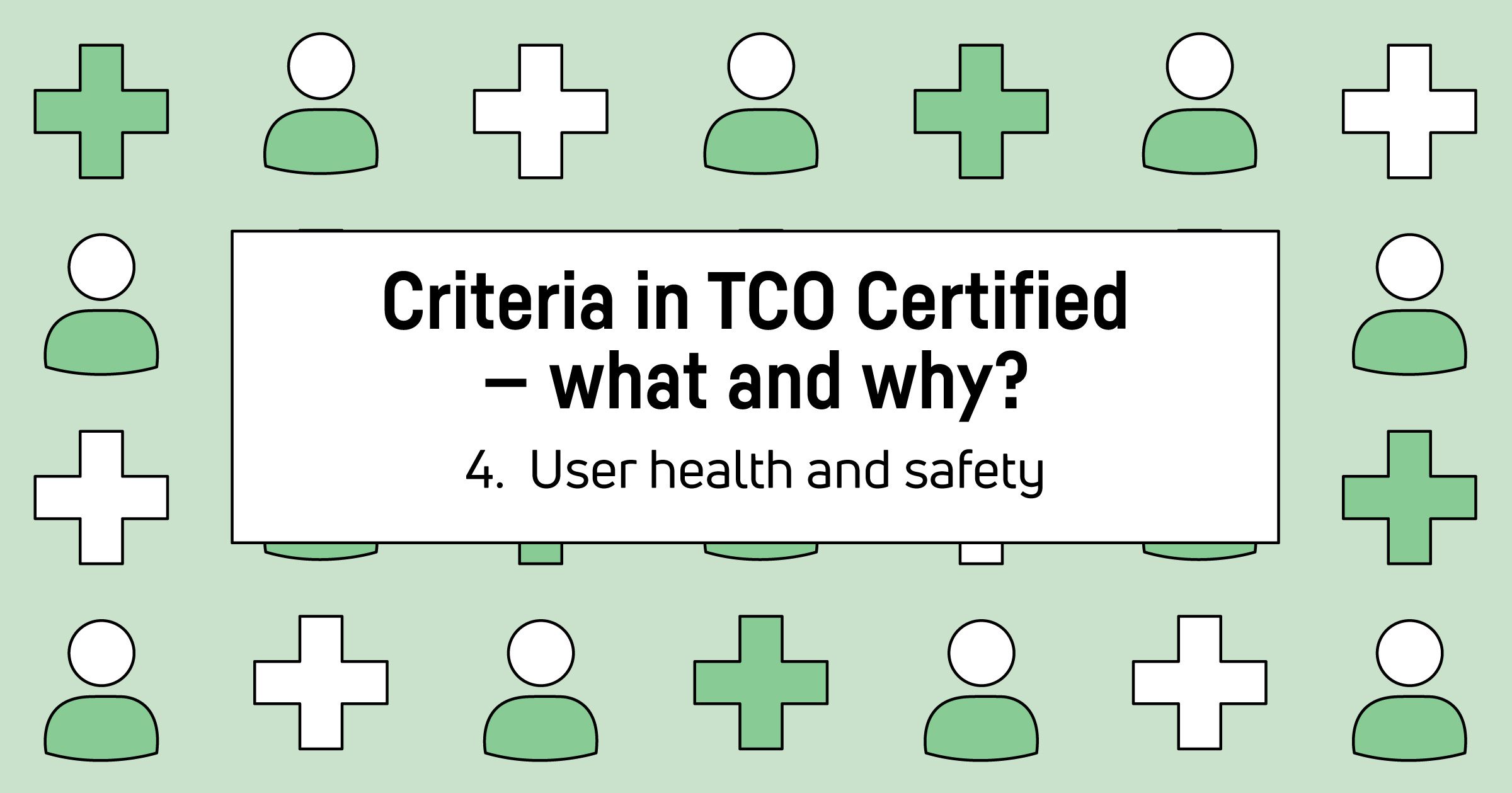A poorly designed IT product may cause discomfort and cause injury and health problems for the user. Fire hazard, electric shock and explosions are some of the risks associated with substandard products. They may also have a short lifespan which is negative from a sustainability perspective. With TCO Certified, products must be safe and ergonomically designed, which supports productivity and enables the user to use the product longer.
Product safety and functionality is fundamental to sustainability in the IT sector. Products that are uncomfortable or unsafe to use often have a short lifespan which leads to pollution, e-waste and high resource consumption. They may also cause health and safety problems for the user. Examples of identified safety hazards include product overheating and risk of fire, battery volatility which can lead to burning or explosion, and poor electrical safety design that may increase the risk of fire or electric shock.
Criteria in TCO Certified — what and why?
This series of articles cover the eight criteria areas in TCO Certified. We go through the most critical sustainability challenges connected to IT products and how you can reduce the risks by including TCO Certified in procurement. All criteria are mandatory, and compliance with criteria is always independently verified.
Our approach: verifying product safety, protecting the user
An IT product must be safe to use and should provide the user with the necessary function and comfort for a long time. To be efficient, criteria for user health and safety aspects must be specific, and tailored to each product category.
User health and safety criteria focus on:
- Requiring that products are safe to use and that the user’s risk of injury is minimized.
- Making sure that any cases of burning, explosion and electric shock are prevented.
- Limiting specific risks through criteria adapted for each product category.




